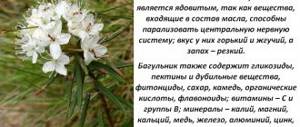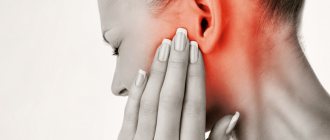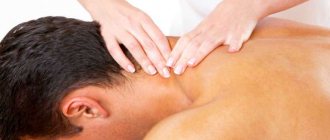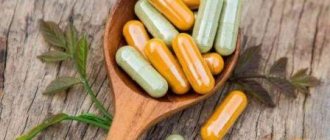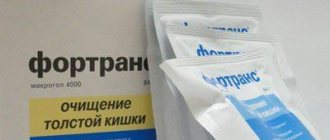Medicinal properties and contraindications herb use tincture decoction for parasites photo. Growing on site Reproduction Care
Common names: wormwood, burnt, emshan, Chernobyl grass, bitter grass, forget-me-nots, glisten, widow's grass and others.
Wormwood is bitter. Artemisia absinthium L.
Latin name Artemisia absinthium L.
Aster families
Genus Artemisia - Wormwood
Ancient authors mention wormwood as a medicinal plant. According to some authors, its Latin name Artemisia indicates that the plant was dedicated to the goddess Artemis. The medieval expert on medicinal plants Lonicerius wrote that the grass, leaves and flowers help digestion, warm the body and expel poison and bile. Ancient Russian herbalists point to its use in the treatment of wounds and ulcers.
Description
Wormwood Artemisia absinthium L. Herbaceous perennial up to 130 cm tall, from the Asteraceae (Asteraceae) family.
The whole plant is grayish-silver with dense pubescence and by this feature it can be distinguished from other types of wormwood. It has a strong specific “wormwood” smell and is extremely bitter in taste.
The root is taproot, branched. The rhizome is vertical.
The stems are erect, branched at the top. A few short, sterile shoots and a few flowering shoots develop.
The leaves of the shoots are long-stalked, alternate, the middle stem leaves are short-petioled, twice (thrice) pinnately dissected, the upper ones are almost sessile.
The flowers are small, tubular, yellow, collected in spherical drooping baskets with a diameter of 2.5-3.5 mm on branches in one-sided racemes, which in turn form a paniculate complex inflorescence.
The fruits are achenes about 1 mm long. It blooms in June-August, the seeds ripen in August-September.
It blooms in July–August, the seeds ripen in September–October.
The plant has a strong specific odor.
Often, instead of wormwood, Artemisia vulgaris L. is used , which is easily recognized by the absence of silvery-white pubescence on the upper dark green side of the leaves. It is also used in folk medicine, but is not an equivalent substitute.
Spreading
Wormwood is a widespread species. It is found throughout the European part of the country (excluding tundra, northern taiga and semi-desert regions), in the Caucasus, in the southern part of Siberia, reaching east to the Yenisei.
A common plant in young fallow areas, where it sometimes forms almost pure thickets; As a weed, it often grows along roads, in gardens, orchards, in pastures, sometimes in meadows, along the edges of forests, on coastal slopes.
How to take wormwood for weight loss
When used carefully, the plant is extremely useful during a diet. The medicinal herb effectively removes toxins from the body, regulates appetite and helps burn fat deposits.
Good results will come from consuming wormwood oil - to prepare it, you need to infuse fresh leaves in olive oil for 10 days. The finished product is filtered and taken shortly before eating, in a large spoon. Teas and herbal decoctions based on the plant also show a beneficial effect.
It should be noted that while taking the herb in the first few days of the diet, hunger may increase. You can suppress it by drinking at least 2 liters of water per day - your appetite will soon return to normal. In total, you should continue to take the plant for no more than 2 weeks, otherwise the body will be harmed.
Growing on site
Grows in poor to average soils
Reproduction
Wormwood is propagated by seeds or green cuttings. Seeds remain viable for up to 2 years. Afterwards it begins to decline rapidly. For sowing, it is preferable to choose a sunny area with light and permeable soil. The plant does not tolerate stagnation of moisture in spring. Considering that wormwood seeds are very small, they can be sown thicker and almost superficially in a small area, and then the young plants can be planted in a permanent place.
Care
Care consists of weeding and loosening. After pruning, the plants grow back well. You should not cut them short before winter, as they will not survive the winter well. In the first year of life, plants overwinter well, but with age their winter hardiness decreases. Therefore, once every 2-3 years it is necessary to renew the plantings. Advice. The plant has a beautiful silver color and will look great with other plants in a mixborder, against the background of a house, or along a path.
P. bitter Artemisia absinthium L.
What are the benefits of wormwood for the body?
At first glance, the plant looks unsuitable for consumption; its taste is too bitter. However, when properly prepared, it has the following beneficial effects:
- helps fight inflammation - bacteria, infections, viruses and fungi;
- has a beneficial effect on digestion - stimulates appetite, improves the flow of bile and the process of breaking down food;
- heals skin damage and promotes rapid restoration of cells and tissues;
- effectively cleanses the body - removes toxins, toxic substances and parasites from it;
- has an analgesic effect;
- stimulates the immune system and helps resist colds;
- normalizes the condition of blood vessels and equalizes pressure.
Women
The benefits of wormwood for women are undeniable - the properties of the plant help with heavy and painful menstruation, reduce bleeding and eliminate the risk of anemia. Remedies from this herb soothe pain and relieve cycle disruptions, normalize hormonal levels.
The benefit of the plant for the female body is that the antioxidant properties of the herb prevent the development of cancer. Wormwood fights infectious inflammation of the genitourinary area.
Important! The properties of wormwood for women are ambiguous - to regulate the cycle, it is necessary to use the herb during the break between menstruation. The plant should not be taken during menstruation - it will cause harm.
Men
The benefits of wormwood for men are also very great - the plant fights ailments and sexual dysfunctions. The herb helps restore potency, shows a good effect in the treatment of prostatitis, and has a positive effect on libido.
Another useful property of the herb is the ability of wormwood to cause a persistent aversion to alcoholic beverages. The plant is also used to eliminate the effects of alcohol poisoning.
Medicinal raw materials
The flowering tops along with the flowers are collected as medicinal raw materials.
The grass is harvested during the flowering period of the plant (June-August), cutting off the leafy tops 20-25 cm long without rough parts of the stem with pruning shears or a knife. If the collection is late, the grass turns dark gray when dried, and the baskets turn brown and crumble. The collected raw materials are laid out for drying as quickly as possible.
Delays in harvesting lead to a decrease in the medicinal value of wormwood.
Dry wormwood in attics, under awnings or in the shade, laying it out in a 3-5 cm layer on paper or fabric and turning it over periodically. Do not dry wormwood in a hot dryer or oven. At the same time, the essential oil evaporates greatly.
The shelf life of raw materials is 2 years.
To prevent the raw materials from darkening, the plants are loosely placed in baskets and quickly dried in the attic or under a canopy, laid out in a layer of 3-5 cm. Dry stems should break. In good weather, wormwood dries out in 5-7 days. Store raw materials in tight bags or wooden containers for 2 years.
Chemical composition
The leaves contain essential oil, glycosides, lactones, saponids, tannins, ascorbic acid, carotene, and potassium salts.
Active ingredients
Wormwood contains bitter glycosides (absinthine and anabsinthine), essential oil, which contains terpenoids, chamazulene, tannins, alkaloids, phytoncides, organic acids and carotene.
The leaves and flowering leafy tops of wormwood contain the glycosides absintin and anabsintin, essential oil (up to 2%), vitamin C, flavonoids, tannins and other substances.
Using wormwood at home
Wormwood for fleas
In the fight against fleas, fresh wormwood has long been used, which, by releasing its essential oils, can create a kind of curtain in the places where it is placed. This product does not destroy parasites, but has a repellent effect on them.
To get rid of these harmful insects, it is important to use only a fresh plant. Therefore, you should periodically replace such a flea remedy that has lost its freshness.
The grass should be hung and placed in areas where parasites multiply; as a rule, this is
- threshold at the entrance to the premises;
- darkened corners in the room;
- pet rookery;
- linen on the bed.
Decoction
A good remedy for killing fleas is a decoction of wormwood, which you can prepare yourself. You need to take fresh grass, wash it and chop it. Place in a bowl, add boiled water and boil for three minutes. Add a few drops of vinegar to the liquid. Cool the broth. During this time it will brew. The resulting product is added to water intended for bathing an animal or rinsing bed linen. It wouldn’t hurt to clean the rug by the front door with this solution. This liquid can also be sprayed on those places in the apartment that are difficult to reach for cleaning.
Fresh wormwood
Knowing the exact location of the foci where fleas live in the apartment, it is worth protecting yourself from jumping parasites by placing bouquets of fresh wormwood and hanging them in these places. If the location of the insects has not yet been determined, then you should take care of your own peace of mind by placing the grass collected in bunches wherever you have to be the most, especially during sleep. Particular attention should be paid when decorating the room with fresh greenery to those places where a dog or cat lives.
Use of oil and tincture
Tincture of bitter wormwood is often used to get rid of both fleas themselves and to prevent diseases carried by these insects. It can be purchased at any pharmacy and is not expensive. The drug is added to water and the resulting solution is treated with the room, combined with wet cleaning. It would also be a good idea to treat the animal’s fur with this liquid if the pet is not allergic to wormwood, which can be determined by applying the product to a small area of skin.
You can use aromatherapy to repel fleas. To do this, you need to place small containers with wormwood oil around the apartment. The cost of this product is not much more expensive than the tincture, but the effect is many times higher. Buying oil is not difficult. You should contact specialized outlets that sell a similar range of goods or look for an appropriate online store.
Wormwood tincture for bedbugs
Wormwood is a real godsend in getting rid of the old-timer among household pests - the bug. This plant with a sharp, far from pleasant odor can drive away insects for quite a long time.
An excellent tincture that will benefit the cause is made from wormwood in alcohol. To make it, you should mix alcohol with fresh raw materials and, after infusing for 24 hours, use it to water insect nests or those places where their accumulations are located.
Wormwood for moths
The bitterness of wormwood cannot be tolerated even by moths. The aroma of the plant causes disorientation in the insect so much that it loses the ability to lay eggs. If you place some dry wormwood branches in the cabinets, the moth will leave to look for a more comfortable place to stay.
Application
Used as a spicy and medicinal plant.
Wormwood medicinal properties Use in official and folk medicine
Infusion, tincture and extract enhance the secretion of gastric juice, bile and pancreatic contents, stimulate digestive function, eliminate spasms of the colon, help some liver cells capture and destroy microorganisms
In addition, wormwood has anti-inflammatory, wound-healing, anthelmintic, choleretic, diuretic, anticonvulsant and mild hypnotic effects. In folk medicine, the range of uses of this plant is much wider. It is used for liver diseases, dysentery, fever, in the form of enemas as an anthelmintic, and for diseases of the female genital area.
Use at home
At home, you can increase your appetite by systematically drinking tea from the herb wormwood. To do this, pour 1 teaspoon of crushed raw materials into 2 cups of boiling water, cover with a thick cloth for 20 minutes and filter. Take 1/4 cup 3 times a day 30 minutes before meals. You can use ready-made wormwood tincture. Prescribe it 15-20 drops 3 times a day 15-30 minutes before meals. A large set of biologically active substances in wormwood allows it to be used to stop bleeding, relieve pain and heal wounds. It has a pain-relieving effect for bruises, sprains, dislocations, spasms and inflammation of the colon.
But wormwood has a very bitter taste, and it can be quite difficult to swallow such a large volume of liquid, such as 1/4 cup. Therefore, you can use wormwood tincture, which is prepared in a 70% alcohol solution. Take 1 part wormwood and 10 parts alcohol, leave for 10 days, filter and store in a dark place. Prescribe 15-20 drops 3 times a day 15-30 minutes before meals. In folk medicine, a decoction of wormwood is used for intermittent fever and for the accumulation of gases in the intestines.
Wormwood is also used as an anthelmintic in the form of tea: take 1 teaspoon of chopped herb per 0.5 liter of water, brew, leave for 10 minutes, drink 2 teaspoons half an hour before meals, preferably in the morning and before bed, eating fresh carrots . Thus, in 2 weeks you can be cured of roundworms. Enemas from a decoction of Poland expel small worms - pinworms - from children. Wormwood is considered the best wound healing agent. Its fresh juice quickly stops bleeding. Fresh leaf is used for external hemorrhages, dislocations, sprains: crushed fresh raw materials are applied to the sore spot. This mass can be used as a compress for thrombophlebitis and bruises. It is also very important that P. bittersweet mixed with thyme is used in folk medicine to treat alcoholism. 1 part of wormwood and 4 parts of thyme (1:4) are crushed, mixed and brewed: 1 teaspoon per glass of boiling water, leave for 10 minutes, filter, take 1 tbsp. spoon before meals, course of treatment is 2-3 months.
Attention! Wormwood is contraindicated during pregnancy and dystrophic liver diseases.
In folk medicine, wormwood mixed with creeping thyme and centaury, taken in equal proportions, is used to combat alcoholism. To do this, pour 2 tablespoons of the mixture into 1 glass of hot water, boil for 5 minutes, cool and filter. Take 2 tablespoons 3 times a day before meals. The course of treatment is 1-2 months. If necessary, treatment is repeated after 1 month. Success depends on the strong desire of the alcoholic to get rid of his addiction to alcohol.
This plant is also used for excessive formation of gases in the intestines, chronic inflammation of the eyes, diseases of the liver, spleen, ulcerative processes in the colon, bad breath, neurasthenia, anemia, influenza, inflammation of the upper respiratory tract.
Medicinal properties
Historical reference
Hippocrates mentioned the medicinal properties of wormwood in his writings. A more detailed description was given by Avicenna in the “Canon of Medical Science”.
In the medieval treatise Odo of Mena, the properties of wormwood are noted to strengthen the stomach, ease menstruation, relieve stomach pain and drive away worms.
P. Sedir in the “Botanical Dictionary” recommends drinking an infusion of wormwood for fever, inflammation of the liver and spleen, poor digestion and worms. He also suggests doing foot baths to relieve fatigue.
In the 19th–20th centuries, alcoholic tincture of wormwood was used for many diseases. It received the name “absinthe” due to the high content of the sesqui-terpene lactone absitine in wormwood. Wormwood is added to elite vermouths to improve and stimulate appetite and speed up food digestion.
Action and use of wormwood
In modern medicine, wormwood is used for gastroenterological diseases associated with secretory insufficiency of the gastrointestinal tract. Wormwood bitterness and other components enhance secretory activity, increase salivation, promote the release of gastric enzymes, and increase the amount of bile secreted into the intestines. Wormwood is effective against worms and parasitic microorganisms .
Wormwood improves the condition of the nervous system, has a cardiac effect, stimulates nonspecific immunity, has an anti-inflammatory effect, and activates the healing of mucous membranes.
Wormwood decoction has proven itself in the treatment of pancreas, flu, colds, paralysis, cramps, diarrhea, gastritis, diseases of the spleen, liver and gall bladder, kidney diseases, dysmenorrhea, amenorrhea, allergic diathesis, agranulocytosis .
Wormwood is effective for weight loss; cleansing the body with wormwood gives good results.
Wormwood is also used for worms: both internally and as an enema. If wormwood is needed for children against worms, then special care and consultation with a pediatrician are required, because wormwood is a hallucinogen.
Cigarettes are made from tissue paper and dry wormwood grass to burn active points on the body. Helps with radiculitis, myositis, arthritis.
In gynecology, wormwood is used as an anti-inflammatory agent for inflammation of the appendages. Prescribed for painful periods or unmotivated lack of regulation. For mastopathy, wormwood gruel is used.
Infusion of wormwood is used to lubricate the affected areas for cuts and insect bites. For stomatitis and bad breath, rinse the mouth with the infusion.
Wormwood is actively used in cosmetology. It regulates the water-salt balance, helps get rid of papillomas, warts and inflammations. Removes excess oily skin. Fights dandruff, seborrhea and hair loss.
You can use wormwood in a bath or add an infusion to a bath for general health and strengthening of the nervous system.
Wormwood is beneficial, but can cause harm to the body if taken for a long time. Wormwood is especially dangerous for pregnant women, as it is an abortifacient.
Using wormwood in the home
Wormwood is used in the home not only as a remedy. It has long been known that wormwood helps against parasites and insects. You can place fresh branches around the house or pour the dried plant into linen bags and place them in the right places. So wormwood will get rid of fleas, ants, bedbugs and other insects.
Based on materials:
1. Maznev N.I. Golden Book of Medicinal Plants / N.I. Maznev. — 15th ed., add. — M.: LLC “ID RIPOL Classic”, LLC Publishing House “DOM. XXI century", 2008. - 621 p. 2. Maznev N.I. Herbalist / N.I. Maznev. - M.: Gamma Press 2000 LLC, 2001. - 512 p. from illus. 3. Tovstukha E. S. Phytotherapy / E. S. Tovstukha. - K.: Health, 1990. - 304 p., ill., 6.55 arc. il. 4. Chukhno T. Great encyclopedia of medicinal plants / T. Chukhno. - M.: Eksmo, 2007. - 1024 p. The information is provided for informational purposes and should not be used for self-medication.
Recipes for various diseases
High temperature, fever
Pour 20 g of dry crushed grass into 0.5 liters of vodka. Leave for at least a day, the longer the better. The dose is purely individual: from 1/2 to 1 glass per day, drink in 3 divided doses and always before bedtime.
Gastritis, loss of appetite, stomach pain
Pour 1 teaspoon of crushed wormwood with 2 cups of boiling water, leave for 30 minutes, strain. Take 1/4 cup 3 times a day 30 minutes before meals.
Worms
Grind the wormwood herb and squeeze out the juice. Take 1 tablespoon on an empty stomach.
Flu
Grind the herb wormwood to obtain 1 tablespoon of crushed mass, pour it with 1 glass of vodka. Leave for 3 weeks in a dark place, then strain. Take 20 g of tincture once a day, but no more than 3 days. Pour 1 tablespoon of dry crushed leaves of wormwood with 1 glass of boiling water, leave in a sealed container in a water bath for 15 minutes, cool, strain. Drink, sweetened with honey, 1/3 cup 3 times a day 30 minutes before meals.
Biliary dyskinesia
Pour 1 teaspoon of chopped wormwood herb into 2 cups of boiling water, leave for 30 minutes, strain. Take 1/4 cup of infusion 30 minutes before meals.
Anemia
Take 1 tablespoon of wormwood leaf juice 3 times a day. Fill a 150 ml container with crushed wormwood from the May harvest. Pour vodka over the wormwood and leave in a dark place at room temperature for 3 weeks. Take tincture 1-2 drops in 1 teaspoon of water once a day. The course of treatment is 3 weeks, then a 2-week break and again a 3-week course.
Smell from the mouth
Pour 1 tablespoon of wormwood into 1 cup of boiling water, leave for 1 hour, strain, cool. Rinse your mouth 5 times a day.
Wormwood: contraindications
Despite the huge number of positive qualities, products based on wormwood, as well as the herb, have some contraindications, which are important to consider when deciding to start treatment with such drugs. This includes the following points :
- individual intolerance;
- gastritis with low acidity or gastric ulcer;
- pregnancy and lactation;
- internal bleeding or anemia;
- allergic reactions of the body.
Did you know? Wormwood oil, despite its positive properties, is prohibited for use during pregnancy. There are cases where miscarriages occurred after consumption.
Knowing how wormwood is beneficial for the body, it is important to remember that improper use or violation of the dosage can also have negative consequences, for example: the appearance of seizures, hallucinations or convulsions.
Classification of species
Today, about four hundred species of wormwood have been identified. Some of them do not bring any benefit, others are completely poisonous.
And only a few are able to have a healing effect if treated properly.
When consumed, it causes severe poisoning, often resulting in death.
However, pharmaceutical companies have learned to extract the necessary substances from it that help in the fight against serious diseases.
Wormwood is used in both human and veterinary medicine. It contains the healing substance santonin.
For many years, people took it to get rid of roundworms until its increased toxicity was discovered.
But the essential oil turned out to be absolutely safe. It is a good bactericidal, anti-inflammatory and analgesic agent.
READ ALSO: Polycystic ovary syndrome: treatment of the disease with folk remedies
The most interesting type of wormwood is God's tree, also “medicinal wormwood.” It has a distinctive appearance and a pleasant lemony smell that sets it apart from hundreds of plants.
The name itself is a reference to old times when it grew only in monastic territories.
Do you know which herbs cleanse blood vessels and improve cerebral circulation? The answer is written in a useful article.
Read how to take psyllium seeds for conception on this page.
In ancient times, this type of wormwood was a cult for all Slavic peoples, and now it is used as a medicine and seasoning.
Tarragon is another variety of this herb, namely wormwood-tarragon. It found popularity as a seasoning for a reason.
The fact is that the leaves of this species do not have the bitter taste characteristic of other varieties of wormwood. This feature has made tarragon a favorite of many housewives.
It is used in canning vegetables, added to soups and meat. Vinegar with tarragon was a delicacy for a long time - it was produced only in the Caucasus and cost a lot of money.
The most popular types of wormwood can be called “wormwood” and “common wormwood.” It is easy to confuse them, because their appearance, taste and beneficial properties are practically the same.
Wormwood can be an ornamental plant and serve as a wonderful decoration for any garden. All low-growing varieties look good framed by stones.
Tree wormwood will grow to the size of a tall bush, hiding some areas in its shade.
White and silver wormwood will accompany the brightest flowers, highlighting their beauty and giving the observer's eyes a slight respite.
The use of herbal decoctions as treatment
Decoctions from the aboveground or underground parts of the plant are effective and medicinal in the treatment of these pathologies:
- rheumatism;
- burn;
- eczema;
- cancerous tumors;
- liver diseases;
- gallbladder disorders;
- avitaminosis;
- anemia;
- cervical erosion;
- hypertension;
- diabetes;
- tuberculosis;
- meningitis;
- neurasthenia;
- inflammation of the oral mucosa;
- epilepsy;
- convulsions;
- migraine;
- gout;
- haemorrhoids;
- alcoholism;
- joint inflammation;
- flatulence;
- expulsion of parasites from the body;
- obesity.
The use of wormwood in combination with certain medications allows one to cope with many serious diseases, especially if all medical recommendations are followed. It is worth knowing that, depending on the type and form of the disease, a decoction of wormwood is used both internally and externally. In the second case, these are lotions, solutions and compresses.
Is wormwood completely safe?
It is impossible to say that wormwood is equally safe for everyone. If you prepare a decoction, tincture or extract incorrectly, you can increase the concentration of the drug. This plant contains not only beneficial substances, but also poisonous ones.
In high concentrations, they can cause deterioration in health. In case of overdose, the following changes can be observed:
- prolonged migraines,
- dizziness,
- nausea,
- loss of consciousness,
- the appearance of hallucinations,
- convulsions,
- convulsive states,
- disturbance of the digestive process,
- loss of appetite,
- psychoemotional disorders,
- shaking of arms and legs,
- increased nervous excitability,
- pain and aches in the joints.
This list can still be supplemented, since each body reacts to an overdose of wormwood differently.
Features of the chemical composition
This plant contains not only rare essential oils, but also a number of other important substances. One of the most important are vitamins. There are quite a lot of them in this plant. Bitter wormwood contains vitamins B, A, C, PP. Based on this, this plant has a great effect on the immune system, vision, gastrointestinal tract, skin, etc.
In addition to vitamins, this plant contains about a dozen useful microelements. Also, wormwood is rich in rare organic acids, for example, succinic, isovaleric, malic.
This plant also contains tannins, which are responsible for the preservation of cells and their membranes. The galenic substances present in wormwood help improve the functioning of the gallbladder and pancreas. Thus, wormwood helps improve the digestive process and the flow of bile. Wormwood also contains terpinoid substances. These rare chemical compounds help improve the performance of the heart muscle. Also, these substances help to quickly eliminate inflammatory processes in the body, as they inhibit the development of enzymes that provoke inflammation.
Such a rich chemical composition could not go unnoticed by modern pharmacists. Many medicines are made based on bitter wormwood extracts, which are intended for the treatment and prevention of many diseases.

